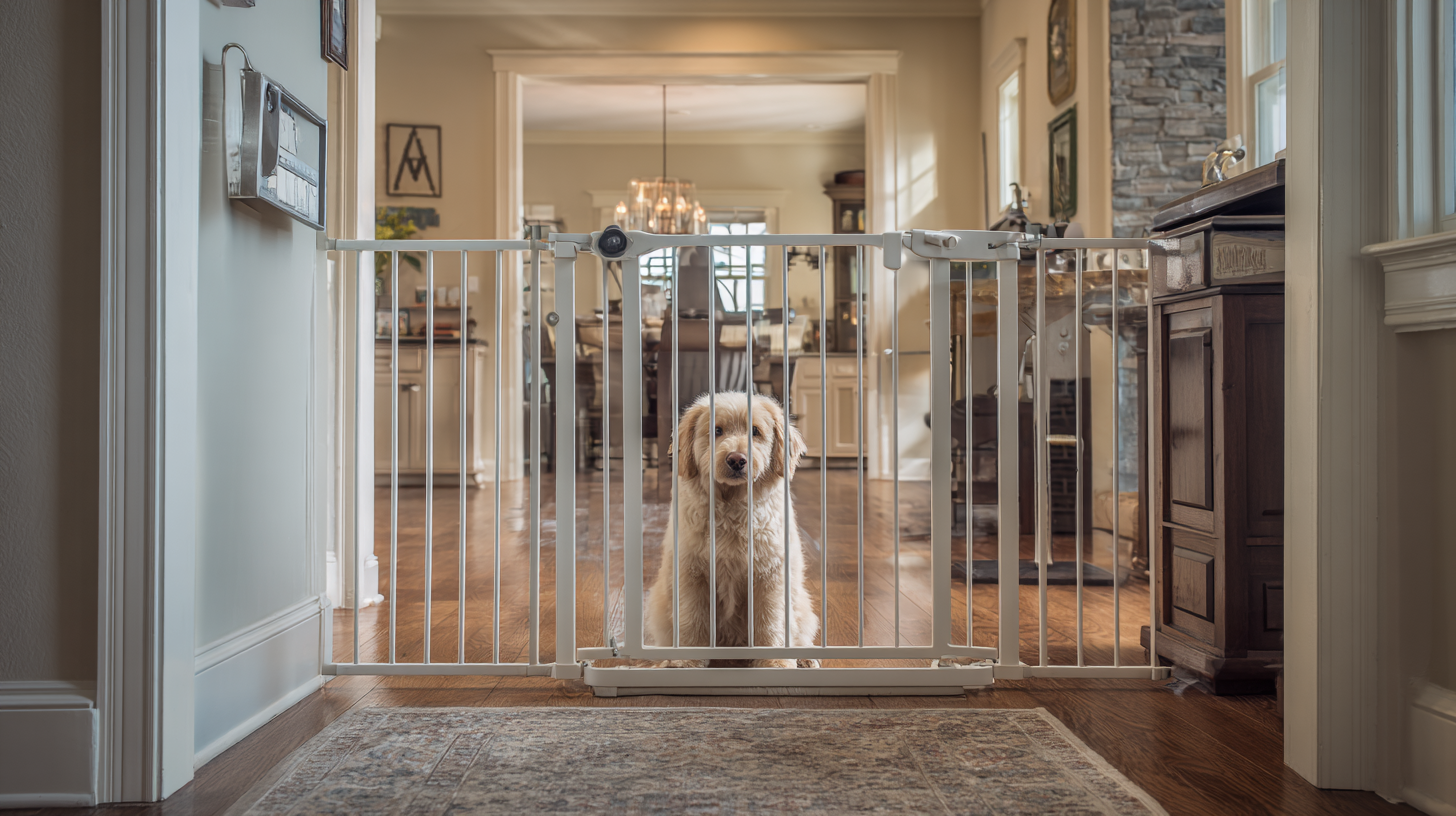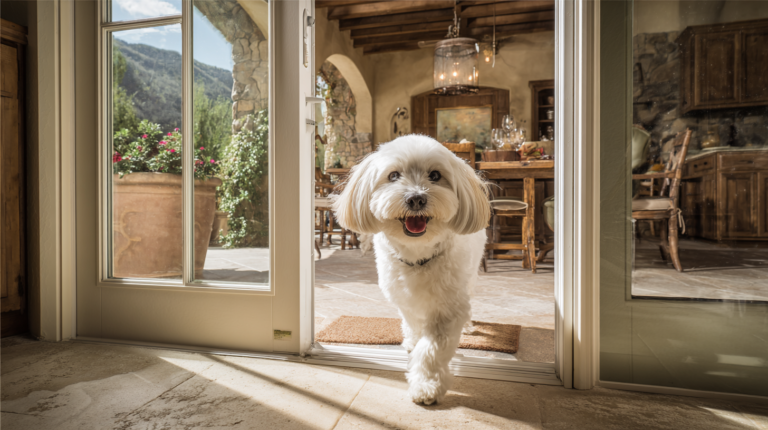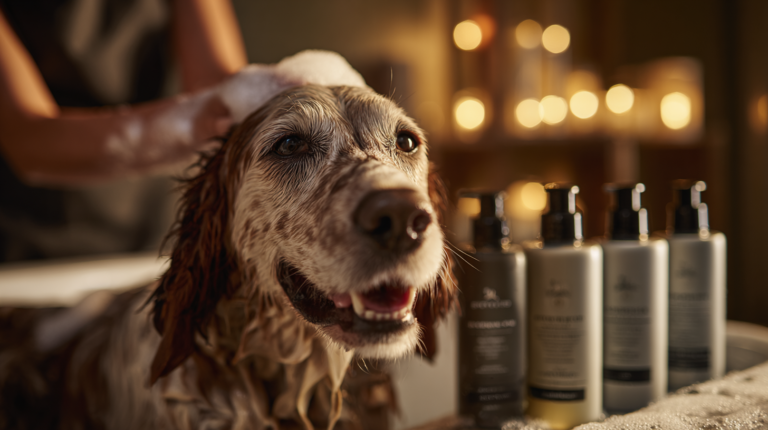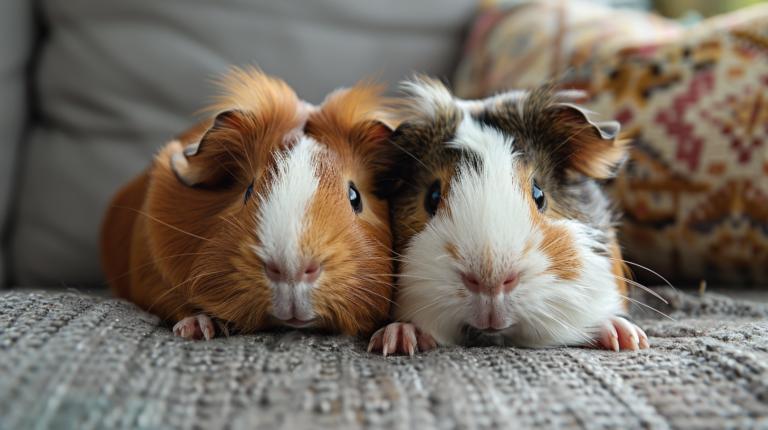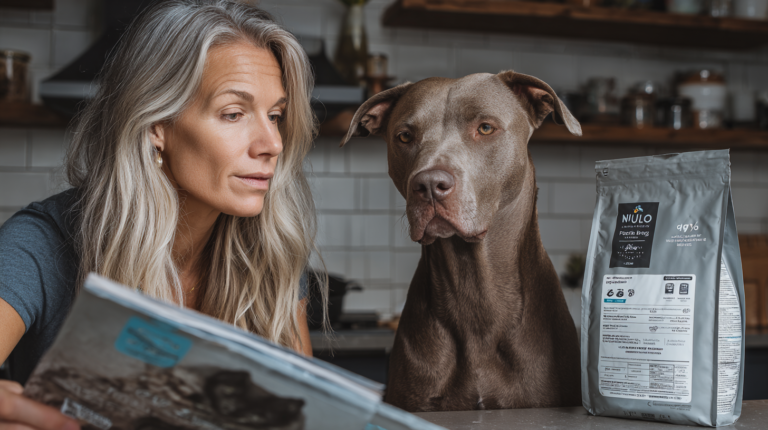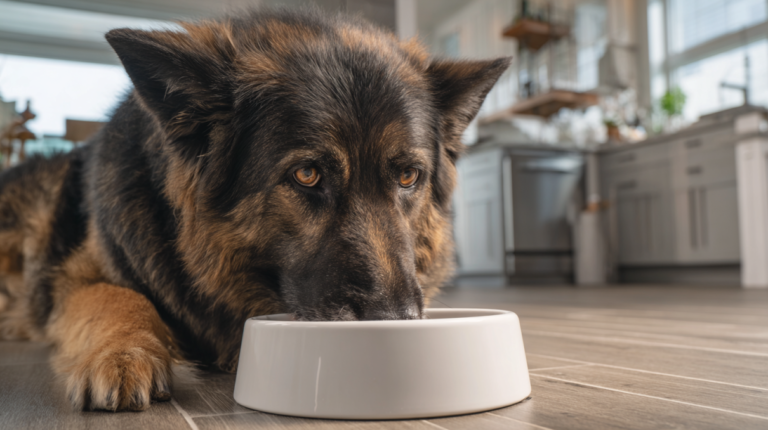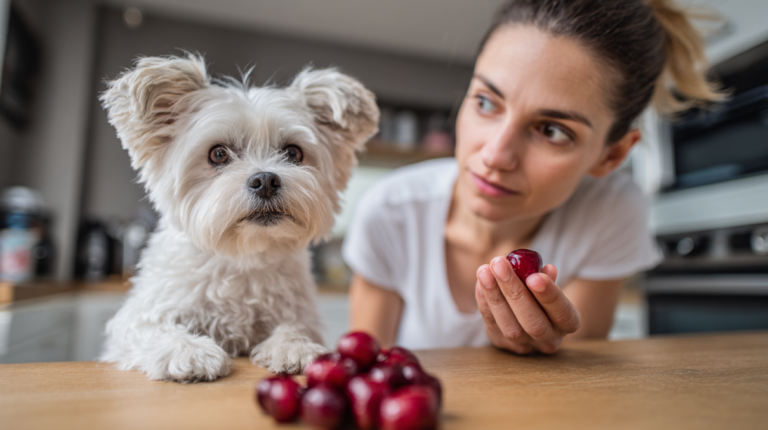Discover the top 7 dog gates that combine safety and style. Expert reviews, safety tips, and buying guide for pet owners seeking the perfect dog gate solution.
Table of Contents
Did you know that over 68% of pet owners report using baby gates or dog gates to manage their pet’s movement around the house? Whether you’re a new puppy parent or managing a senior dog’s access to certain areas, choosing the right dog gate can make the difference between a harmonious home and constant worry about your furry friend’s safety.
Dog gates serve as essential tools for pet safety, training, and home management. From preventing accidents on stairs to keeping your dog away from hazardous areas, the right dog gate provides peace of mind while maintaining your home’s aesthetic appeal. In this comprehensive guide, we’ll explore the top 7 dog gates that perfectly balance functionality with style, helping you make an informed decision for your pet’s needs and your home’s design.
Why Every Dog Owner Needs a Quality Dog Gate
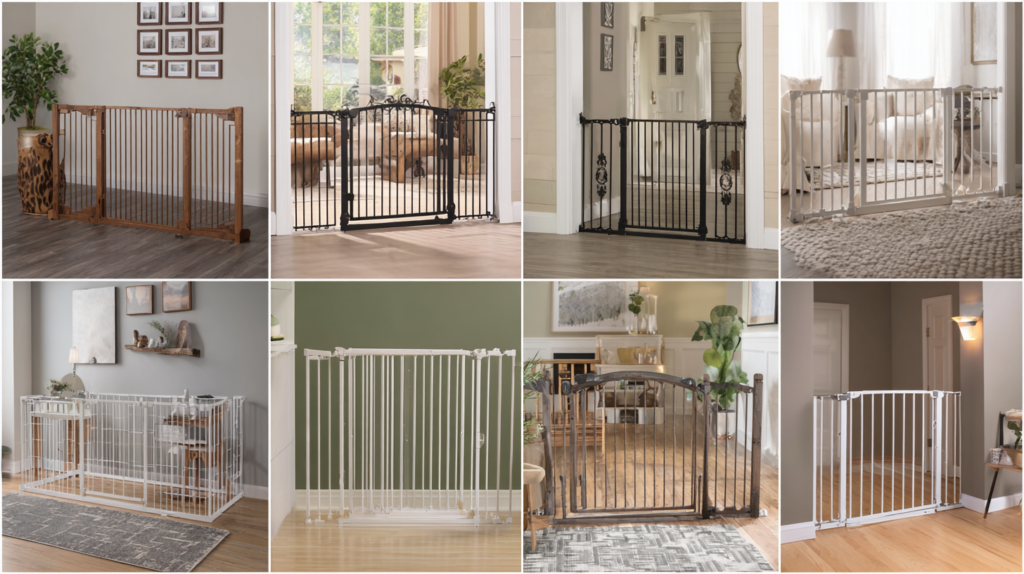
A dog gate isn’t just a barrier—it’s a training tool, safety device, and home management solution all rolled into one. Professional dog trainers recommend using gates to establish boundaries, create safe spaces, and gradually introduce dogs to new areas of the home. The American Kennel Club emphasizes that proper use of dog gates can significantly reduce household accidents and provide dogs with a sense of security.
Modern dog gates have evolved far beyond simple wooden barriers. Today’s options combine advanced safety features with stylish designs that complement your home décor. Whether you need a pressure-mounted gate for temporary use or a hardware-mounted option for permanent installation, understanding your specific needs is crucial for making the right choice.
Understanding Different Types of Dog Gates
Pressure-Mounted Dog Gates
Pressure-mounted gates use tension to stay in place, making them ideal for doorways and hallways where you don’t want permanent installation. These gates are perfect for renters or those who frequently rearrange their living spaces. However, they’re not recommended for the top of stairs due to safety concerns.
The main advantage of pressure-mounted dog gates is their versatility and ease of installation. Most models can be set up in minutes without tools, and they’re easily removable when needed. They work best in openings between 28-62 inches wide, depending on the model.
Hardware-Mounted Dog Gates
Hardware-mounted gates attach directly to walls or door frames using screws and brackets. These gates offer maximum security and are the only safe option for stairways. While installation requires more effort, the permanent attachment ensures your gate won’t shift or fall under pressure.
Professional pet behaviorists recommend hardware-mounted gates for households with large dogs, multiple pets, or high-traffic areas. The secure mounting system can withstand significant force, making them ideal for enthusiastic dogs who might try to push through barriers.
Freestanding Dog Gates
Freestanding gates don’t require any mounting and can be moved wherever needed. These gates are perfect for temporarily blocking off areas or creating flexible boundaries. They’re particularly useful for outdoor use, travel, or homes with unusual doorway configurations.
Top 7 Dog Gates: Expert Reviews and Recommendations
1. Carlson Extra Wide Walk-Through Pet Gate
Why It’s Our Top Pick: The Carlson Extra Wide gate combines functionality with elegant design, making it perfect for homes where style matters as much as safety.
Key Features:
- Adjustable width: 29-34 inches (extensions available up to 58 inches)
- Walk-through design with easy-latch mechanism
- Pressure-mounted for quick installation
- Available in white and wood finishes
- Safety lock feature prevents accidental opening
Best For: Busy households with moderate-sized dogs who need frequent access through the gate.
Expert Tip: This gate’s walk-through feature eliminates the need to constantly step over barriers, making it ideal for kitchens and living areas where you need frequent access.
2. Regalo Easy Step Walk-Through Dog Gate
Why We Love It: The Regalo Easy Step offers premium features at an affordable price point, making professional-grade pet containment accessible to all pet owners.
Key Features:
- Pressure-mounted with reinforced frame
- Width range: 29-34 inches (expandable to 56 inches)
- Convenient walk-through door
- All-steel construction for durability
- Matte bronze finish complements modern décor
Best For: Budget-conscious pet owners who don’t want to compromise on quality or safety.
Professional Insight: Veterinary behaviorists appreciate this gate’s sturdy construction, which can withstand the enthusiasm of dogs up to 100 pounds.
3. Richell Tall One-Touch Pet Gate
Why It Stands Out: The Richell gate’s extra height makes it perfect for jumpers and larger breeds, while its one-touch operation provides convenience for busy pet parents.
Key Features:
- 35-inch height (6 inches taller than standard gates)
- One-touch magnetic latch system
- Pressure-mounted design
- Width adjustable from 32-36 inches
- Sleek white finish matches any décor
Best For: Homes with athletic dogs, large breeds, or persistent escape artists.
Safety Note: The extra height significantly reduces the likelihood of dogs jumping over, making it an excellent choice for breeds known for their jumping abilities.
4. Evenflo Soft & Wide Farmhouse Collection Gate
Why It’s Different: This gate combines the safety of traditional barriers with soft, fabric sides that prevent injury while maintaining an attractive farmhouse aesthetic.
Key Features:
- Soft fabric sides eliminate hard edges
- Farmhouse-inspired design
- Pressure-mounted installation
- Width range: 38-60 inches
- Machine-washable fabric components
Best For: Homes with young children and pets, or those seeking a softer, more decorative option.
Unique Benefit: The fabric construction makes this gate particularly suitable for households with both toddlers and pets, as it eliminates the risk of injury from metal bars.
5. Munchkin Push to Close Hardware-Mounted Gate
Why Safety Experts Recommend It: This hardware-mounted gate provides maximum security for stairways and high-risk areas while featuring an innovative push-to-close mechanism.
Key Features:
- Hardware-mounted for permanent installation
- Push-to-close automatic latching
- Fits openings 28-32 inches wide
- Steel construction with white finish
- Meets ASTM safety standards
Best For: Stairways, balconies, and any area where maximum security is essential.
Installation Tip: Professional installers recommend checking wall studs before installation to ensure proper support for the gate’s hardware mounting system.
6. Cardinal Gates Stairway Special Safety Gate
Why It’s Specially Designed: Created specifically for stairway use, this gate features a unique design that eliminates the bottom bar, reducing trip hazards.
Key Features:
- No bottom bar design prevents tripping
- Hardware-mounted for stairway safety
- Fits openings 27-42.5 inches wide
- Patented safety latch system
- Available in white and brown finishes
Best For: Stairways in homes with elderly family members or young children.
Safety Innovation: The elimination of the bottom bar makes this gate 40% safer for human traffic while maintaining complete pet containment.
7. Retract-A-Gate Mesh Dog Gate
Why It’s Revolutionary: This retractable gate disappears when not in use, making it perfect for homes where permanent barriers would interfere with daily life.
Key Features:
- Retractable mesh design
- Mounts to wall or door frame
- Extends up to 52 inches wide
- Completely retracts when not needed
- Mesh material prevents climbing
Best For: Wide openings, temporary use, or homes where permanent gates aren’t practical.
Innovative Design: The retractable feature makes this gate ideal for entertaining, as it can disappear completely when guests arrive.
Essential Safety Features Every Dog Gate Must Have
Secure Locking Mechanisms
The most critical safety feature of any dog gate is its locking mechanism. Look for gates with double-action latches that require two separate motions to open. This prevents accidental opening by children or clever pets. The latch should be positioned at a height that’s convenient for adults but challenging for children to reach.
Professional pet trainers emphasize that the latch should be easy for humans to operate with one hand while carrying items, but secure enough to prevent pets from learning to open it. Some dogs are remarkably clever at figuring out simple latches, so investing in a gate with a sophisticated locking system is crucial.
Appropriate Height and Spacing
Standard dog gates range from 29-35 inches in height, but the right height depends on your dog’s size and jumping ability. For small dogs, a 29-inch gate is typically sufficient, while larger breeds or athletic dogs may require 35-inch or taller barriers.
Bar spacing is equally important. Gaps should be no more than 4 inches apart to prevent dogs from getting their heads stuck. For very small dogs or puppies, look for gates with narrower spacing or solid panels to prevent squeezing through.
Stable Construction and Materials
The gate’s construction material directly impacts its safety and durability. Steel gates offer the best strength-to-weight ratio, while aluminum provides excellent corrosion resistance. Avoid gates with sharp edges, protruding hardware, or materials that could splinter or break under pressure.
Weight capacity is another crucial factor. Most quality gates can handle dogs up to 100 pounds, but if you have multiple pets or particularly strong dogs, look for gates rated for higher weight limits.
Common Mistakes Pet Owners Make When Choosing Dog Gates
Mistake 1: Choosing the Wrong Mounting Type
Many pet owners select pressure-mounted gates for stairways, which can be extremely dangerous. Never use pressure-mounted gates at the top of stairs—the gate could shift under pressure and cause serious injury. Always use hardware-mounted gates for stairways and any location where a fall could cause harm.
Mistake 2: Ignoring Height Requirements
Underestimating your dog’s jumping ability is a common error. Even small dogs can surprise you with their athleticism. Border Collies, for example, can easily clear 30-inch barriers. Always choose a gate that’s at least 6 inches taller than your dog’s standing height.
Mistake 3: Focusing Only on Price
While budget considerations are important, the cheapest gate isn’t always the most economical choice. A poorly made gate that fails or causes injury will cost much more in the long run than investing in a quality product initially.
Mistake 4: Not Measuring Properly
Accurate measurements are crucial for proper fit and safety. Measure your opening at the narrowest point, and account for baseboards, door frames, and any irregularities. Most gates have some adjustability, but they all have maximum and minimum width limits.
Installation Tips for Maximum Safety
Pressure-Mounted Gate Installation
Even though pressure-mounted gates don’t require screws, proper installation is crucial for safety. Clean the mounting surfaces thoroughly to ensure maximum grip. Adjust the gate to the manufacturer’s specified tension—too loose and it won’t hold, too tight and you may damage walls or door frames.
Check the gate’s stability regularly, especially in high-traffic areas. Pressure-mounted gates can gradually loosen with use, so periodic re-tightening is necessary.
Hardware-Mounted Gate Installation
Hardware-mounted gates require more careful installation but provide superior security. Always mount into wall studs or use appropriate wall anchors for your wall type. If you’re unsure about your wall construction, consult a professional installer.
Use the provided hardware exclusively—substituting different screws or brackets can compromise the gate’s integrity. Follow torque specifications carefully; over-tightening can strip threads or crack mounting points.
Professional Installation Considerations
For stairway installations or if you’re uncomfortable with DIY projects, professional installation is worth the investment. Many injuries occur from improperly installed gates, making professional installation a smart safety choice.
Training Your Dog to Respect Gate Boundaries
Introducing Your Dog to the Gate
The key to successful gate training is positive association. Start by setting up the gate in a non-threatening way, allowing your dog to investigate it while it’s open. Use treats and praise to create positive experiences around the gate.
Never force your dog through the gate or use it as punishment. The gate should represent a boundary, not a barrier to good things. Practice having your dog sit and wait before opening the gate to establish respect for the boundary.
Establishing Clear Rules
Consistency is crucial for gate training success. Establish clear rules about when the gate is closed and what behavior is expected. All family members should follow the same rules to avoid confusing your dog.
Consider using the gate as part of your dog’s routine. For example, closing the gate during meal times can help establish feeding boundaries and reduce food guarding behaviors.
Troubleshooting Common Training Issues
If your dog tries to jump over or push through the gate, don’t punish the behavior. Instead, redirect them to appropriate activities and reward compliance. Some dogs may initially whine or paw at the gate—ignore this attention-seeking behavior and only interact when they’re calm.
For persistent escape artists, consider adding height extensions or switching to a different gate style. Some dogs respond better to solid panels than bars, as they can’t see what they’re missing on the other side.
Maintenance and Longevity Tips
Regular Inspection and Maintenance
Inspect your dog gate monthly for signs of wear, loose hardware, or damage. Pay special attention to latch mechanisms, which can accumulate dirt and debris that affects operation. Clean moving parts regularly with a damp cloth and lubricate as recommended by the manufacturer.
Check mounting hardware for tightness, especially on hardware-mounted gates. Vibration from daily use can gradually loosen screws, compromising safety.
Cleaning and Care
Most dog gates can be cleaned with mild soap and water. Avoid harsh chemicals that could damage finishes or create toxic residues. For gates with fabric components, follow manufacturer washing instructions carefully.
Steel gates may show rust spots over time, especially in humid environments. Address rust immediately with appropriate rust removers and touch-up paint to prevent spread.
When to Replace Your Dog Gate
Replace your dog gate immediately if you notice bent bars, cracked welds, or malfunctioning latches. A compromised gate is worse than no gate at all, as it provides false security while potentially creating new hazards.
Consider replacement every 3-5 years for heavily used gates, or sooner if you notice significant wear. Technology improvements in gate design mean newer models may offer better safety features than older versions.
Special Considerations for Different Dog Breeds
Large Breed Considerations
Large breeds require gates with higher weight ratings and typically need taller barriers. Great Danes, German Shepherds, and other large breeds can easily push through lightweight gates, so prioritize strength and stability over aesthetics.
Consider the dog’s adult size when choosing a gate for puppies. A gate that works for a 12-week-old Labrador puppy won’t be suitable for the same dog at 12 months.
Small Breed and Puppy Considerations
Very small dogs and puppies may be able to squeeze through standard gate spacing. Look for gates with narrow bar spacing or solid panels to prevent escapes. Some manufacturers offer puppy-specific gates with smaller spacing.
Be aware that small dogs can be surprisingly good climbers. A Chihuahua might not be able to jump over a 30-inch gate, but they might be able to climb it like a ladder.
Senior Dog Considerations
Older dogs may have mobility issues that affect their interaction with gates. Consider gates with lower step-over heights or walk-through designs to make passage easier for arthritic dogs.
Senior dogs may also have vision or hearing impairments that make them more likely to walk into closed gates. Choose gates with high visibility or consider adding reflective tape to make them more noticeable.
Integrating Dog Gates with Home Décor
Matching Your Home’s Style
Modern dog gates come in various finishes and styles to complement your home’s décor. Choose colors and materials that blend with your existing furnishings rather than standing out as obvious pet accessories.
Consider the gate’s visual impact on your space. A large, dark gate in a small, light-colored room will dominate the space, while a gate that matches your trim color will blend seamlessly.
Decorative Options
Some manufacturers offer decorative panels or custom finishes that can transform a utilitarian gate into a design element. These options typically cost more but can be worthwhile in prominent locations.
Consider seasonal decorations that can be safely attached to your gate. Just ensure any decorations don’t interfere with the gate’s operation or create new hazards.
Troubleshooting Common Dog Gate Problems
Gate Won’t Stay Closed
If your gate won’t stay latched, check for debris in the latch mechanism. Clean thoroughly and ensure proper alignment. Worn latches may need replacement—contact the manufacturer for parts availability.
For pressure-mounted gates that won’t stay closed, the mounting tension may be insufficient. Readjust according to manufacturer specifications.
Gate is Difficult to Open
Stiff latches often result from dirt accumulation or lack of lubrication. Clean the mechanism thoroughly and apply manufacturer-recommended lubricant. If the problem persists, the latch may be worn and require replacement.
Dog Has Learned to Open the Gate
Smart dogs sometimes figure out how to operate simple latches. Consider upgrading to a gate with a more complex locking mechanism or adding a secondary safety latch.
Some dogs can lift pressure-mounted gates out of their mounts. This is a sign that you need a hardware-mounted gate for that location.
Cost Considerations and Budget Planning
Initial Investment vs. Long-Term Value
Quality dog gates represent a significant upfront investment but provide years of service when properly maintained. Consider the cost per year of use rather than just the initial price.
Factor in potential savings from preventing damage or injuries that could occur without proper pet containment. A good gate can prevent costly repairs to furniture, floors, or walls.
Budget-Friendly Options
If budget is a primary concern, prioritize safety features over aesthetics. A basic but well-made gate is better than an attractive but poorly constructed one.
Consider purchasing gates during sales events or looking for lightly used options from reputable sources. Just ensure any used gate hasn’t been damaged or modified.
Premium Features Worth the Investment
Some premium features justify their additional cost. Walk-through designs, automatic closing mechanisms, and extra-wide options can significantly improve daily usability.
Professional-grade hardware and finishes may cost more initially but provide better longevity and appearance retention over time.
When to Consult a Professional
Installation Challenges
If you’re uncomfortable with DIY installation, especially for hardware-mounted gates, professional installation ensures proper setup and safety. The cost of professional installation is minimal compared to potential injury from improper installation.
Structural Concerns
If you’re unsure about your wall’s ability to support a hardware-mounted gate, consult a contractor or structural engineer. This is especially important for plaster walls, unusual construction, or older homes.
Behavioral Issues
If your dog consistently defeats or ignores gate boundaries despite proper training, consult a professional dog trainer or animal behaviorist. The issue may require specialized training techniques or different containment strategies.
The Future of Dog Gate Technology
Smart Gate Features
Emerging technologies are beginning to appear in dog gates, including smartphone-controlled latches and monitoring systems that alert owners to gate status. While these features are still developing, they represent the future of pet containment technology.
Improved Materials
Manufacturers are continuously developing new materials that offer better strength, weather resistance, and aesthetics. Future gates may feature self-cleaning surfaces, improved rust resistance, and more sustainable materials.
Enhanced Safety Systems
Future gate designs may include features like automatic locking when pets approach, pressure sensors that prevent closing on pets, and integration with home security systems.
Making Your Final Decision
Choosing the right dog gate involves balancing your specific needs, budget, and home environment. Consider your dog’s size, behavior, and the location where you’ll use the gate. Remember that the best gate is one that you’ll use consistently and that keeps your pet safe while fitting your lifestyle.
Take advantage of manufacturer warranties and customer service support. Reputable companies stand behind their products and can provide valuable guidance for specific situations.
Don’t hesitate to start with a basic model and upgrade later if your needs change. Your dog’s behavior and your family’s needs may evolve, and gate requirements can change accordingly.
Educational Table
| Gate Type | Best For | Price Range | Installation | Safety Rating | Durability |
|---|---|---|---|---|---|
| Pressure-Mounted | Doorways, temporary use | $30-80 | Easy, no tools | Good | 3-5 years |
| Hardware-Mounted | Stairways, permanent use | $50-150 | Moderate, tools required | Excellent | 5-10 years |
| Freestanding | Flexible barriers, outdoor use | $40-120 | None | Fair | 2-4 years |
| Retractable | Wide openings, occasional use | $80-200 | Moderate | Good | 3-7 years |
| Extra-Wide | Large openings, multiple pets | $60-180 | Easy to moderate | Good | 4-6 years |
| Walk-Through | High-traffic areas | $45-130 | Easy to moderate | Good | 4-7 years |
FAQ Section :
Q: Are pressure-mounted dog gates safe for stairs?
A: No, pressure-mounted gates should never be used at the top of stairs. They can shift under pressure and cause serious falls. Always use hardware-mounted gates for stairways, which attach securely to the wall or door frame.
Q: What height dog gate do I need for my breed?
A: Choose a gate at least 6 inches taller than your dog’s standing height. Standard gates (29-30 inches) work for most small to medium dogs, while large breeds and athletic dogs need 35-inch or taller gates.
Q: How wide can dog gates open?
A: Most standard gates fit openings 28-42 inches wide. Extra-wide gates can span 38-62 inches, and some models accept extensions for even wider openings. Always measure your space carefully before purchasing.
Q: Can I install a dog gate myself?
A: Pressure-mounted gates are designed for DIY installation and require no tools. Hardware-mounted gates need basic tools and wall anchors. If you’re uncomfortable with installation, especially for stairways, consider professional installation.
Q: How do I train my dog to respect gate boundaries?
A: Start with positive associations by allowing investigation while the gate is open. Use treats and praise around the gate. Establish consistent rules and practice having your dog sit and wait before opening the gate.
Q: What’s the difference between baby gates and dog gates?
A: While similar in function, dog gates are typically taller and stronger to handle larger, more athletic pets. Many quality gates are designed for both babies and pets, but always check weight and height specifications.
Q: How often should I replace my dog gate?
A: Replace immediately if you notice bent bars, cracked welds, or malfunctioning latches. Generally, well-maintained gates last 3-7 years depending on usage and quality. Inspect monthly for wear and damage.
For more expert pet care tips and product recommendations, visit BlithePet.com your trusted source for pet wellness.
Conclusion
Selecting the perfect dog gate is about more than just containment—it’s about creating a safe, harmonious environment where your pet can thrive while respecting household boundaries. The seven gates we’ve reviewed represent the best combination of safety, durability, and style available today.
Remember that the best dog gate is one that fits your specific needs, home layout, and dog’s personality. Whether you choose a pressure-mounted option for flexibility or a hardware-mounted gate for maximum security, prioritize safety features and proper installation above all else.
Take the time to properly introduce your dog to their new gate, maintain it regularly, and don’t hesitate to upgrade if your needs change. A quality dog gate is an investment in your pet’s safety and your peace of mind.
Have a similar experience with your pet? Share it in the comments below! Don’t forget to check out our other helpful guides at BlithePet.com for more expert advice on keeping your furry family members safe and happy.

